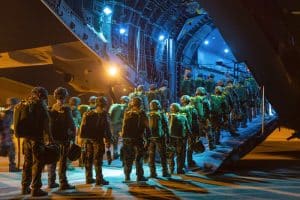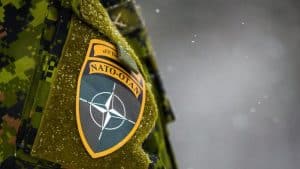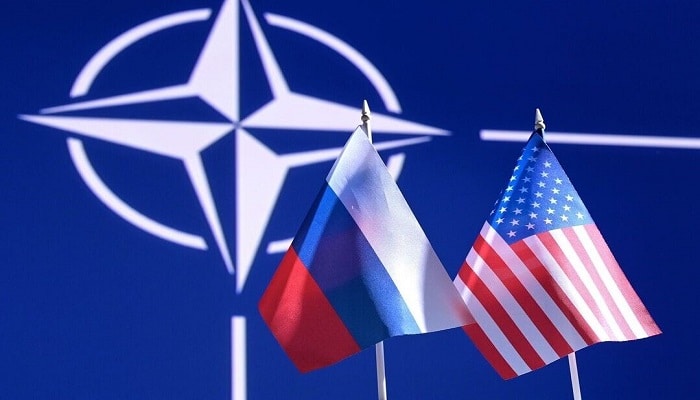PNN – An important factor that can lead to the escalation of tension and a potential direct confrontation between Russia and the North Atlantic Treaty Organization is the possibility of military deployment of NATO forces on the territory of Ukraine.
Perhaps until a while ago, among experts and politicians, the scenario of an all-out military conflict between Russia and NATO seemed very unexpected and unlikely. But now, considering the political and field conditions governing the battle fronts and the high risk of an increase in a large-scale military confrontation between individual NATO member countries or the entire union with Russia, this transition should be viewed quite seriously.
Crossing some red lines determined by the parties to the conflict and ensuring that they do not respond can lead to a surprise moment that will eventually lead to much more dangerous incidents than the current situation.
Forms of Western intervention in the Ukrainian war
To be more precise, NATO countries have long been one of the parties to this conflict in various forms.
In its first form, the West collectively provided significant financial and military aid to Ukraine. The weapons systems transferred to Ukraine are becoming more advanced and destructive every day. As the war continues, the supply of weapons to Kiev from the Soviet-era weapons depots in the Warsaw Pact countries is decreasing, and the Ukrainian army must replace them with Western systems and ammunition. Although this replacement is limited based on the capabilities of Western defense industries and also the reserves available in these countries in the current situation, but in case of escalation of conflicts, the European countries will have the potential and industrial capacity to produce and replace the required weapons, albeit with difficulty.
Because the Russians are confident of the political will of the collective West to support Ukraine in order to weaken Russia, the Kremlin appears to be preparing for the worst-case scenario, namely a steady increase in comprehensive and long-term military aid to Ukraine. In addition to the provision of weapons and ammunition, these aids include training of personnel, assistance in the development of military industries and infrastructure, and reimbursement of the current costs of the country, which allows Ukraine to focus its available resources on the defense sector.

Second, Ukraine enjoys extensive Western support in the form of intelligence data, including technical items, satellite data, radar systems, reconnaissance aircraft, and other sources. The information obtained has made it possible for Kiev to solve a wide range of problems, the information provided to the Ukrainian forces begins with the general situation of the conflict points and ends with the identification of specific targets on the Russian fronts. Western military advisers as providers of this information may be wary of sharing certain types of information with Ukrainian authorities, but there is no question of using this data in military operations against Russian forces.
Third, there are reports of the participation of military personnel of NATO member states in various fronts of Ukraine. It seems that with the passage of time, their presence in the battlefields is recognized by the western governments. Based on the estimation of recent reports from Russian sources, until October 2023, it is said that about 2,000 foreign mercenaries were present on the Ukrainian fronts. Of course, these reports can be somewhat different, but the important point in this matter is that the fighters who enter this country with the coordination of Kiev follow a completely systematic process. It should also be mentioned that in the past few months, the military of some NATO countries, such as France, have officially entered into conflicts, which can bring predictable consequences.
At the same time, such low-level interventions by Western countries do not pose the risk of direct military tension between Russia and NATO at the moment. This type of low-level engagement allows Kiev’s Western partners to gradually increase the quality of their support for Ukraine. The supply of cruise missiles has long become a normal thing, or the promise of providing F-16 fighter jets made by the United States, which, of course, is the only time of delivery from the Kiev partners that is decisive.
When does direct confrontation take place?
An important factor that can lead to the escalation of tension and a potential direct confrontation between Russia and NATO is the possibility of military deployment of NATO forces on the territory of Ukraine. Some Western political figures have discussed the prospect of such a scenario, although their views have not been supported by the United States or presented as an official NATO position. Several leaders of member states have distanced themselves from the idea of deploying troops in Ukraine. But at this moment, one must ask what factor can lead to such a decision and how can it be implemented?
The most important factor in the possibility of direct intervention of the member states or the entry of the entire NATO alliance into the conflict can be the significant military success of the Russian army. Currently, the frontline field conditions remain relatively stable, but the field successes of Russian forces in capturing disputed territories in recent months have been remarkable.
The Russian army has increased the pressure, taken the initiative, expanded its offensive front and created a suitable support to carry out various plans in the military field and the diplomatic field. On the other hand, the political and logistical conditions for a repeat of last year’s invasion by the Ukrainian armed forces do not exist at the moment.
There are frequent reports of ammunition shortages among Ukrainian forces, although this may be addressed through foreign supplies in the future. However, periodic attacks on Russian territory with cruise missiles, drones and artillery have caused losses and casualties on the Russian side, but these losses are not enough to disturb the stability on the Russian front.
Moreover, such attacks greatly increase the motivation and more active efforts by Russian forces to create “buffer zones”, areas from which Ukrainian armed forces cannot target Russian mainland.
The lack of momentum or significant developments over a long period does not mean that such events are not possible in the future. Rather, due to the acquisition of combat experience of the Russian army, the sending of appropriate supplies by the military-industrial complex to the front lines, the high casualties of the Ukrainian side, the delay in the delivery of Western equipment, etc., such opportunities are increasing.
One of the most probable and disastrous scenarios for the Ukrainian forces could be a large advance by the Russian forces towards Kharkiv, Odessa or another big city, which of course can be considered as an important catalyst for the intervention of NATO countries. If several such developments occur simultaneously or consecutively, it will make the intervention of Western countries inevitable. The controlled version of the scenario took place after the advance of Russian forces in Kharkiv and the Western countries authorized the use of their long-range missiles for Ukraine to target targets on the Russian mainland.

NATO on two paths
But it must be acknowledged that there are two different views in this alliance regarding the future and the way NATO will enter the war in Ukraine. The first view does not see support for Kiev only in intervention and sending military supplies, money and “volunteers” to Ukraine. They believe that by admitting defeat and conducting diplomatic negotiations, the damage can be minimized and a bigger failure, if not the complete collapse of Ukraine, can be prevented.
But the second point of view favors a fundamental change in NATO’s approach and maximum participation in the conflict, which allows the alliance to intervene directly.
Scenarios of NATO’s direct entry into the Ukraine war
Direct intervention can take different forms. It is possible to talk about the use of infrastructure, including airports of NATO member states, another possibility is the significant participation of communication units, engineering forces and air defense system crews, although they may be prevented from being on the front line.
A more radical scenario is the deployment of military forces from NATO member states along the borders of Ukraine and Belarus to facilitate the transfer of Ukrainian forces to the east. Finally, an even more radical option would be the deployment of NATO military forces on the front lines, which could be seen as an unacceptable move by the alliance’s members.
The use of any of these scenarios would have the potential for direct conflict between the armed forces of Russia and NATO countries. Such a confrontation will inevitably raise questions about the future of NATO, the transfer of military operations to other areas of contact with Russia, including in the Baltic region, where the costs of stopping this escalation of conflicts will be much higher and even more challenging. The more casualties both sides suffer, the more intense the hostility and hostilities will be, bringing the world closer to the threshold of using nuclear weapons. There will be no winners in this scenario.
The mentioned indicators can only be a series of hypothetical possibilities, however, it cannot be ignored. Until recently, few people would have considered the possibility of delivering such a large amount of weapons to Ukraine. Three years ago, Russia-Ukraine conflict itself seemed unlikely. But today this is a reality in front of the world. Finally, the prospect of an all-out war between Russia and NATO should be taken seriously. which can have irreparable consequences for the world.

